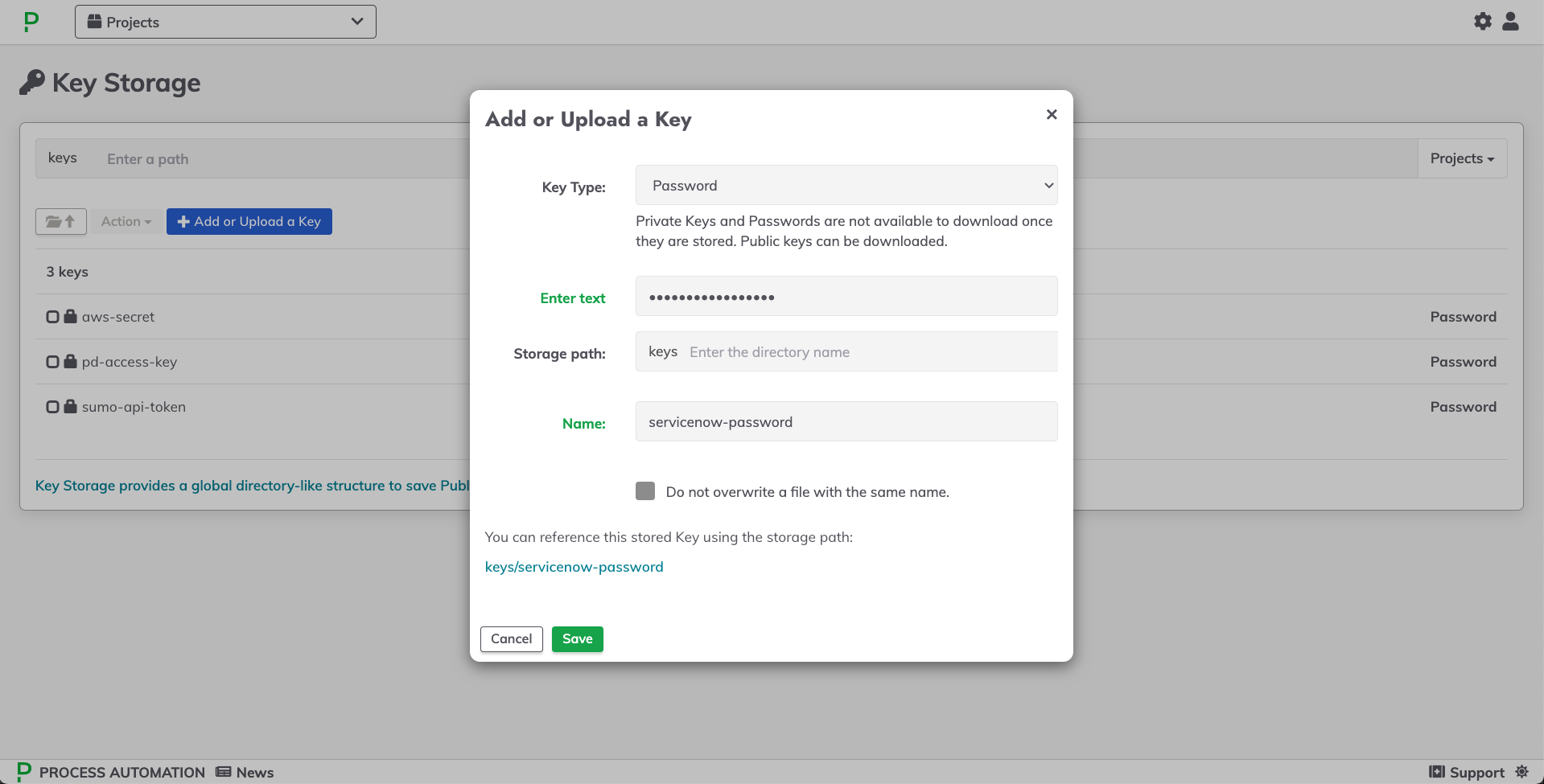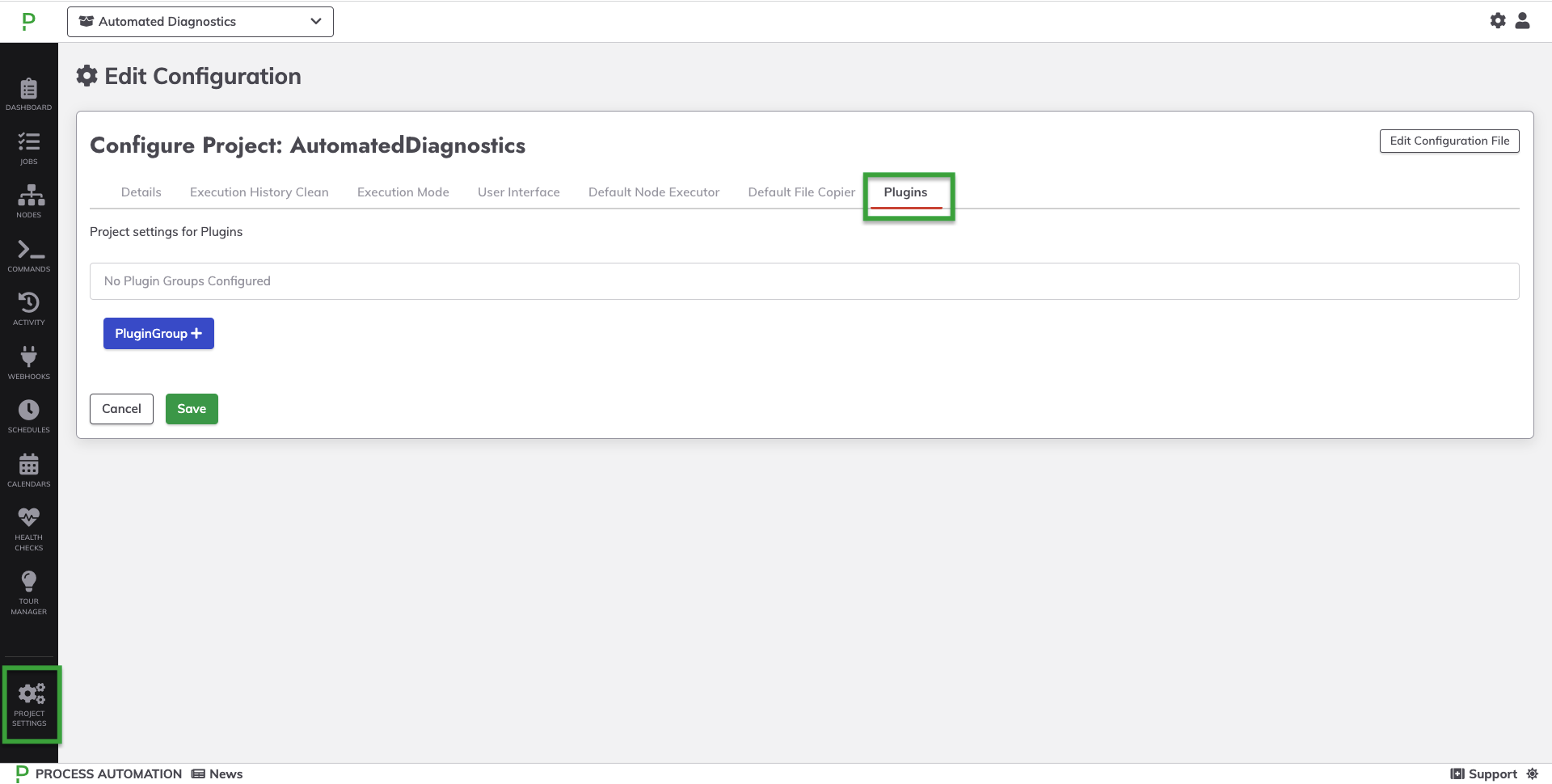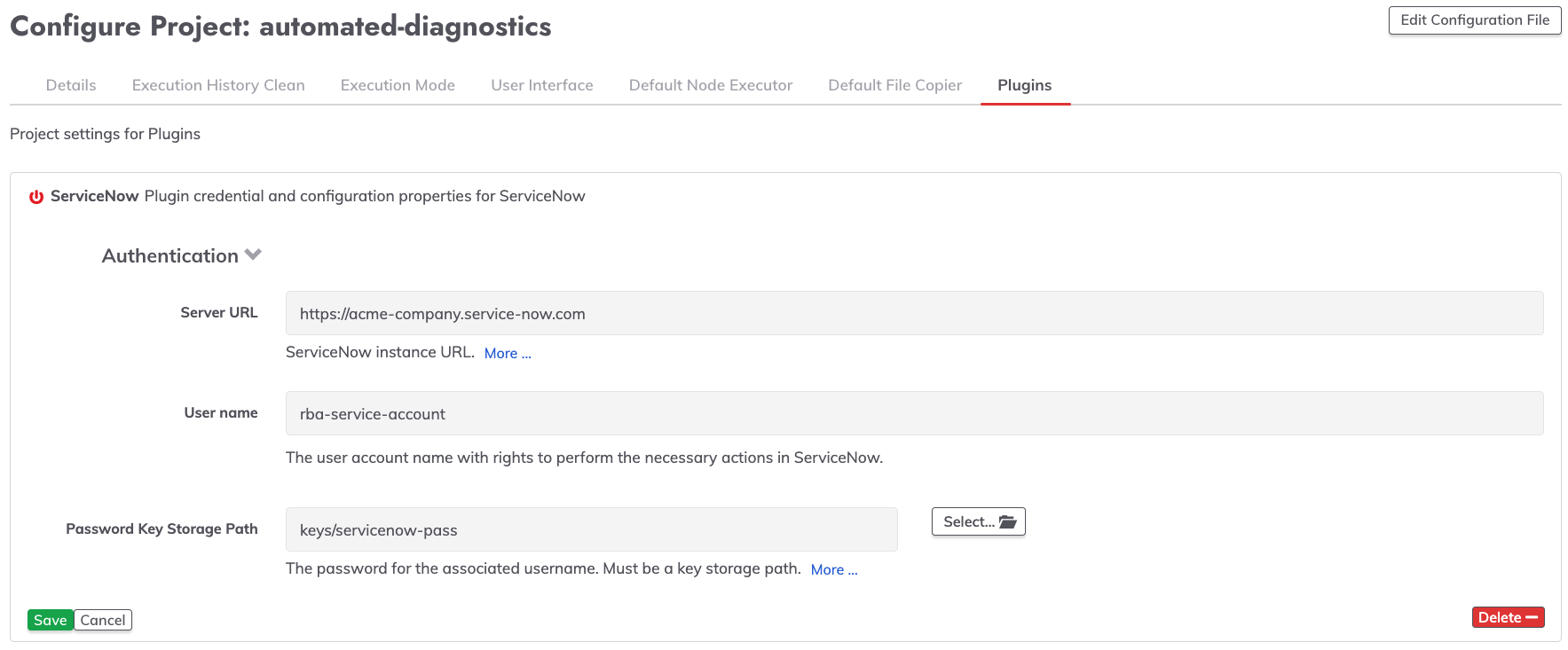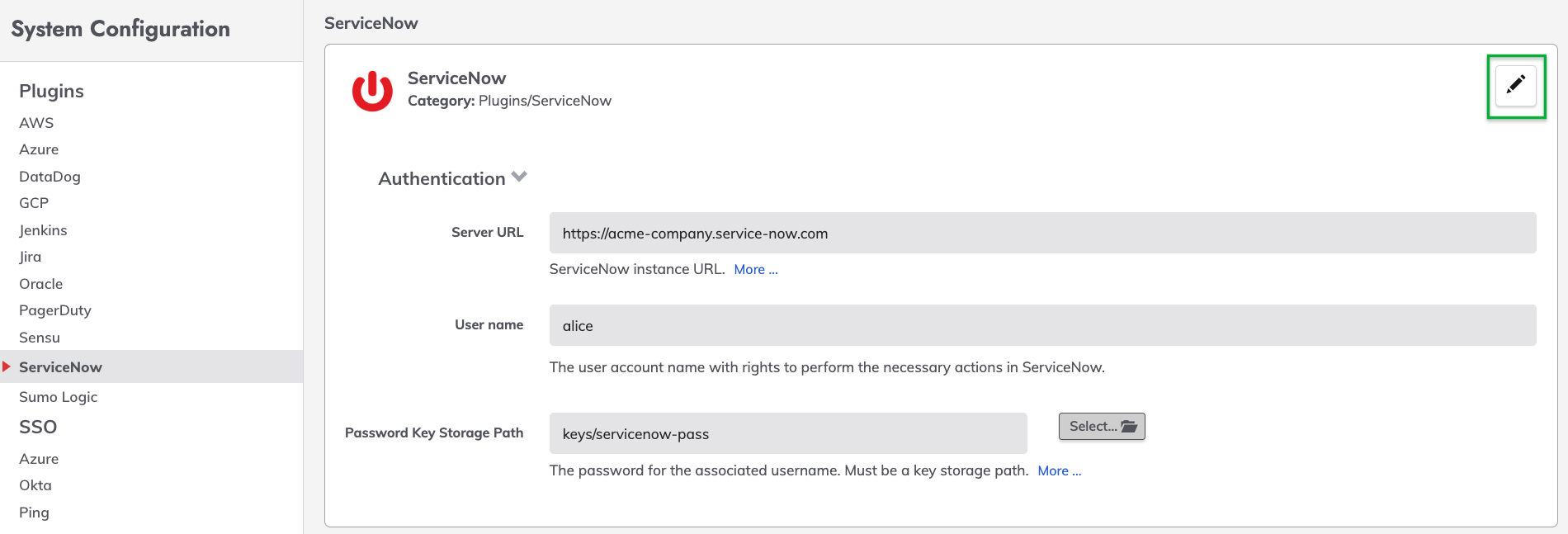ServiceNow Plugins
ServiceNow Plugins
Overview
Runbook Automation integrates with ServiceNow through a variety of plugins listed below. By integrating Runbook Automation with ServiceNow, users can automate many of their operations around Incidents, Change Requests, Service Requests, Tasks and much more. These integrations allow operations teams to provide self-service mechanisms to users throughout the business, as well as setup event-driven automation for workflows that involve ServiceNow.
| Plugin Name | Plugin Type | ServiceNow Table |
|---|---|---|
| Update Incident State | Job Step | Incident |
| Check Incident Assigned | Job Step | Incident |
| Check Incident State | Job Step | Incident |
| Comment Incident | Job Step | Incident |
| Create Incident | Job Step | Incident |
| Edit Incident | Job Step | Incident |
| View Incident | Job Step | Incident |
| Check Change State | Job Step | Change |
| Update Change State | Job Step | Change |
| Create Change Request | Job Step | Change |
| Create Incident | Notification | Incident |
| Comment Incident | Notification | Incident |
| Create Change Request | Notification | Change |
| ServiceNow Node Source | Node Source | CMDB |
Click to expand to see the full list of Runbook Automation plugins for ServiceNow
Setup
Authentication for the ServiceNow plugins can be configured for the entire system or for an individual project.
Add ServiceNow Account Password to Key Storage
System Key Storage
Place the ServiceNow credentials into the System Key Storage if all Runbook Automation Projects will share the same ServiceNow credentials.
- Click on the System Menu (gear icon) in the upper right.
- Click on Key Storage
- Click +Add or Upload a Key. Select Password for the Key Type.
- Paste the ServiceNow password into the field.
- Click Save:

Project Key Storage
Place the ServiceNow credentials into the Project Key Storage if only a specific project should use these ServiceNow credentials.
- In the specific project, click on Project Settings in the lower left.
- Click on Key Storage.
- Click +Add or Upload a Key. Select Password for the Key Type.
- Paste the ServiceNow password into the field.
- Click Save.
Project Level Configuration
Use the following steps to configure authentication for the ServiceNow plugins for a specific project.
- In the specific project, click on Project Settings in the lower left.
- Click on Edit Configuration then click on Plugins.

- Click on +PluginGroup.
- Select ServiceNow from the list.
- Add your ServiceNow instance URL to the Server URL field.
- Place an active ServiceNow username into the User name field. This user must have sufficient permissions to perform the actions that will be automated by Runbook Automation.
- Click Select next to the Password Key Storage Path field and find the ServiceNow password from the prior section stored in Key Storage.
- Click Save for the plugin configuration.
- Click Save for the Project Settings:

System Level Configuration
Use the following steps to configure authentication for the ServiceNow plugins for the whole Runbook Automation system.
- Click on the System Menu (gear icon) in the upper right.
- Click on System Configuration.
- Navigate to the ServiceNow section and click on the Pencil Icon in the upper right:

- Add your ServiceNow instance URL to the Server URL field.
- Place an active ServiceNow username into the User name field. This user must have sufficient permissions to perform the actions that will be automated by Runbook Automation.
- Click Select next to the Password Key Storage Path field and find the ServiceNow password from the prior section stored in Key Storage.
- Click Save for the plugin configuration:

